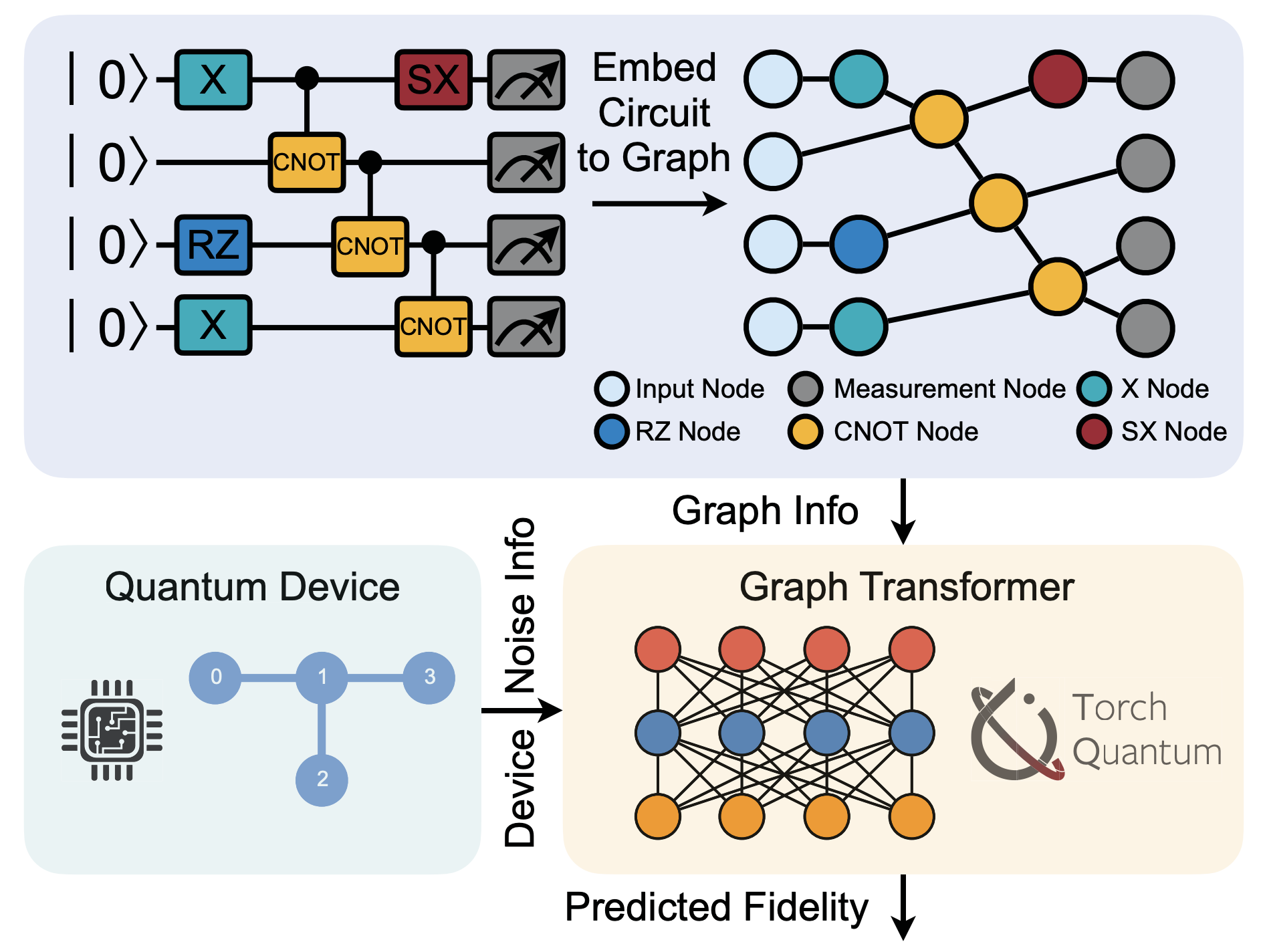The proposed fidelity prediction framework. The quantum circuit is firstly embedded into a graph in which the nodes are gates and edges are execution orders. The feature vector on each node contains the device noise information, such as gate error rates. The graph is processed by a graph transformer in TorchQuantum to estimate circuit fidelity.
Quantum Computing has attracted much research attention because of its potential to achieve fundamental speed and efficiency improvements in various domains. Among different quantum algorithms, Parameterized Quantum Circuits (PQC) for Quantum Machine Learning (QML) show promises to realize quantum advantages on the current Noisy Intermediate-Scale Quantum (NISQ) Machines. Therefore, to facilitate the QML and PQC research, a recent python library called TorchQuantum has been released. It can construct, simulate, and train PQC for machine learning tasks with high speed and convenient debugging supports. Besides quantum for ML, we want to raise the community's attention on the reversed direction: ML for quantum. Specifically, the TorchQuantum library also supports using data-driven ML models to solve problems in quantum system research, such as predicting the impact of quantum noise on circuit fidelity and improving the quantum circuit compilation efficiency. This paper presents a case study of the ML for quantum part in TorchQuantum. Since estimating the noise impact on circuit reliability is an essential step toward understanding and mitigating noise, we propose to leverage classical ML to predict noise impact on circuit fidelity. Inspired by the natural graph representation of quantum circuits, we propose to leverage a graph transformer model to predict the noisy circuit fidelity. We firstly collect a large dataset with a variety of quantum circuits and obtain their fidelity on noisy simulators and real machines. Then we embed each circuit into a graph with gate and noise properties as node features, and adopt a graph transformer to predict the fidelity. We can avoid exponential classical simulation cost and efficiently estimate fidelity with polynomial complexity. Evaluated on 5 thousand random and algorithm circuits, the graph transformer predictor can provide accurate fidelity estimation with RMSE error 0.04 and outperform a simple neural network-based model by 0.02 on average. It can achieve 0.99 and 0.95 R2 scores for random and algorithm circuits, respectively. Compared with circuit simulators, the predictor has over 200× speedup for estimating the fidelity. The datasets and predictors can be accessed in the TorchQuantum library. DOI 10.1145/3508352.3561118
Hanrui Wang, Zhiding Liang, Jiaqi Gu, Zirui Li, Yongshan Ding, Weiwen Jiang, Yiyu Shi, David Z. Pan, Frederic T. Chong, and Song Han.







